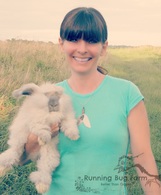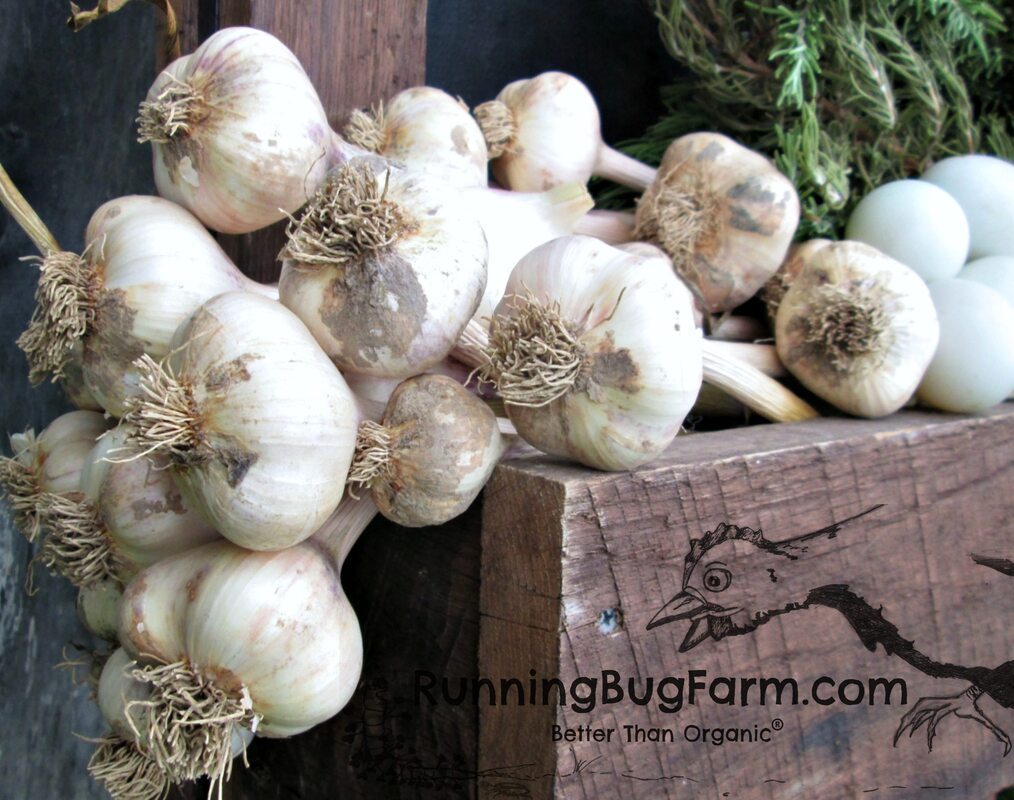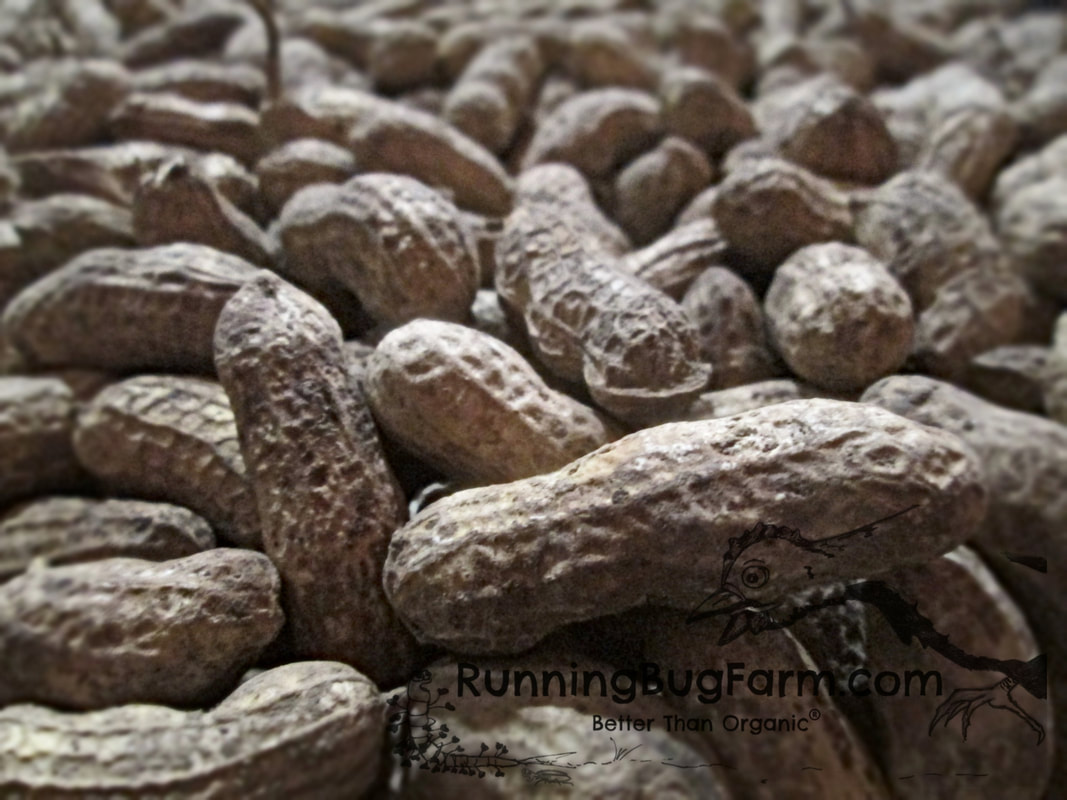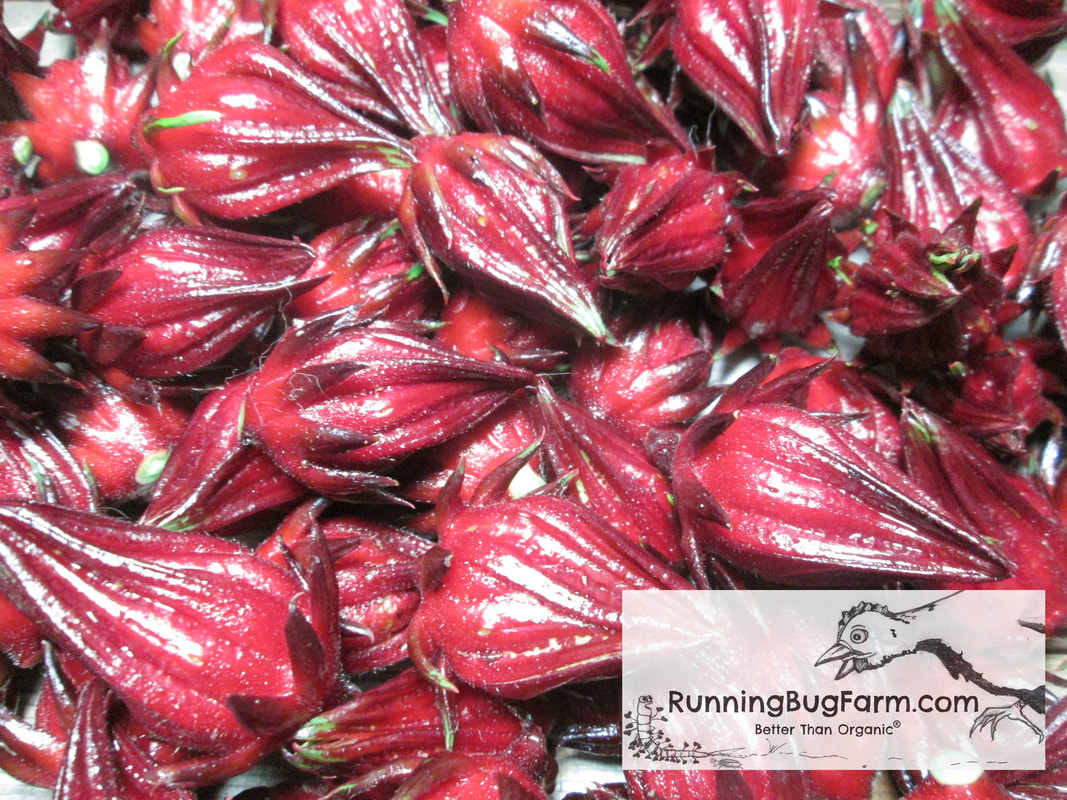|
Growing Inchillium Red soft neck garlic is surprisingly easy and relatively low maintenance. It also stores longer than hard neck types of garlic. If you choose to use weed barrier cloth, it is even easier. Generally, garlic is planted in the fall for a early summer harvest. My little West Virginia Eco Farm is located in Zone 6b. You can zero in on your USDA Plant Hardiness Zone here. I plant my crop in October and try to harvest it by the end of June or no later than the first week of July. Weather permitting. The only problems I tend to have are that it almost always rains a lot around the time I need to harvest. The bulbs do not require much watering the closer it gets to harvest time. It is actually better if conditions are on the dry side. Too much rain or over watering can cause the bulbs to rot. Choosing your garlic seed to plant is very important. If you ordered from a seed supplier, depending on the amount you ordered, you may choose to plant every single clove to get you started. If you have more than enough cloves like I do, it pays to be a bit more choosy. Select only the biggest and healthiest cloves that you have. While it's not a guarantee, it will greatly increase your odds of getting larger sized bulbs out of your harvest. Save the smaller cloves for eating if you can. By October I have mapped out where I will be planting the years garlic. I like to try to keep from planting my garlic in the same spot for at least 5 years for good crop rotation. Sometimes it's shorter, but never shorter than 3 years. Summary: Crop rotation is 3-5 years for good pest and disease control. I prepare the beds by ensuring at least one has a new application of compost. I tend to choose a second bed that didn't have compost added to it that season but still has relatively loose and fertile soil. My reasoning is that if there are any imbalances in either soil type, I have given myself a little protection in not potentially loosing my entire crop. I also try to plant each row in different locations rather than side by side for the same reason. Regarding crop success, I haven't had any major differences in either bed type in the decade plus I've been exclusively growing Inchillium Red soft neck garlic. However, I do sometimes notice a difference in the density of the leaves. I always have variety in the bulb sizes. This happens in both rows. Another occasional difference is bug damage. One section of a row may be rather hard hit with bug damage, while the other row will be free and clear. I always plant more garlic than I need to cover any losses. I do not use chemicals or any other treatments to deal with pests. On the subject of pests, I give my wonderful neighboring farm some of my garlic abundance. They store these bulbs in Diatomaceous Earth aka DE. This quickly resolves any Dry Bulb Mites (Eriophyes Tulipaie or Aceria Tulipae Keifer) and Onion Maggots (Delia Antiqua) that may have gotten into the garlic heads. This method also vastly increases storage life. Not only that, it also reduces the likelihood of planting infested bulbs in the fall; effectively cutting off the pests lifecycle. When my beds are ready for planting, I pull out my Dewitt weed barrier cloth that I have dedicated to growing garlic. I have used a lot of different brands and types of weed barrier cloth. All they created for me was a headache and a financial loss. These cheaper brands have been nothing but a time suck and cash drain. Some of them only lasted two weeks before starting to deteriorate. This caused a heck of a miserable time trying to clean up the degrading bits. Dewitt has become ridiculously expensive for the past four plus years. I used to get it for less than half what I'm seeing it sell for now. It is my hope that the prices will stabilize in the near future. Thankfully, if properly cared for, it has a 12 year life. While mine have yet to reach that age, some rolls are a little over half that age. I have no complaints. A head of garlic contains the garlic seed. The seed are the individual cloves within the head. You want to gently break apart the head until you have nothing but loose individual cloves. Do not remove the papery husk from the cloves - they protect the cloves from rotting. I cut X's into the cloth for where each clove will be planted. Thankfully, once I've cut my X, I'm good to go until the cloth gives up the ghost (hopefully 12 years down the row). You can use a garden dibbler or a hori hori garden knife to make a 2" deep hole for each clove. You want to place the clove in the ground so that the pointy end faces up. The wider part of the clove should always be at the bottom. If you used a garden dibbler to make the hole, gently push the soil over the hole to cover the clove. If using a hori hori garden knife, carefully remove the blade with a slightly rocking motion. The soil usually falls onto the clove. Once the blade is fully removed, if more soil is needed to cover the clove, gently brush it into place. When I first started, I used a wooden garden dibbler handcrafted from a shop on etsy. The wood started to crack, so I decided to try out a hori hori garden knife. Now it's all I use. The biggest downside to a hori hori in my opinion is also one of it's biggest pluses, it's sharp. I like to leave the blade in the soil and rock the blade to widen the hole. With my other hand, I use my fingers to push the clove into the soil. If I'm tired or feeling rushed, I have cut my gloves in the process. My recommendation is if you have very young garden helpers, let them use a wooden garden dibbler and save the hori hori garden knife for more mature users. For the most part, you shouldn't have a lot of weeding to do until late winter, early spring. If you stay on top of it, the work will be minimal in this regard. Generally weeds need to be removed along the edges of the weed barrier cloth & from the holes in the cloth that the garlic is growing through. If you choose not to use weed barrier cloth, a weed hoe aka stirrup hoe or hula ho can greatly cut down on hand weeding. You can also opt to space your garlic so that a weed hoe will fit between them from all sides. No matter what, there will be weeds that grow tight to the bulbs. In this situation, hand weeding is required. Harvest when 1/3 of the lower leaves start to turn brown and dye off. For me this is usually by the end of June. Soft neck garlic doesn't produce scapes. You can not use scapes as a reference as to when to harvest. Growing Guide Garlic is an annual plant in the Amaryllidaceae family that first requires a brief growing season, then cold to go dormant. It will then rush back to life in the spring, showing rapid growth. 7-9 Months Zone: 5-9 Sun: Full Water: Moist, Well Drained Soil: Slightly Acidic to Neutral (6.0-7.0) Clove Spacing: 6" Row Spacing: 6" to 12" inches Height: 12-18" tall Scientific Name: Allium sativum Direct Sowing: Plant 6 to 8 weeks before the ground freezes or around your first fall frost date. Sow seed in a light, well drained, slightly acid to neutral soil. Supply soil generously with compost or other organic matter, especially in clay. Sow 2" inches deep with the wider root facing down, slender pointed side faces up. Row space: 6" to 12" inches. A 10' foot row should produce around 5lbs of bulbs. Do not sow in waterlogged soil or heavy clay. Harvest in 7-9 months. Transplanting: Not recommend. Harvest: Very early summer. Do not pull from the stems. First, use a garden fork or a shovel to loosen soil around the bulbs. Then gently remove the bulbs from the soil. Be sure to try not to pierce or cut the bulbs. Curing: Curing is critical. It improves the flavor and hardiness of the bulbs. Do not cut the stems from the bulbs. Leave the green tops intact. Gently move to a shaded, warm, dry, and well-ventilated area. Hang in bundles or spread the bulbs out in a single layer on wire screens or drying racks. If possible, use fans to circulate the air (do not point the fan/s directly at the bulbs). Allow to cure until the neck is dry and outer skin is papery, approximately 2 - 3 weeks. During this time, check for spoiled bulbs being careful to handle them gently and as little as possible. The high water content of the bulbs after harvest means that they can be easily bruised. They are also much more susceptible to rot. Once curing is complete you can cut off the dried tops approx. 1" inch above the bulb. Or leave in place to braid. They are now ready for eating, storage, or planting. Storage: Store out of direct light no more than 4" inches deep in sturdy brown paper bags or boxes in order to maintain good air circulation. Store by braiding or tying several heads together and hanging up, or store by cutting tops off and placing bulbs in a mesh bag or open container, or spread on shelves in a layer less than 4" inches deep. Keep in a cool, dry, well-ventilated place at 45-55°F (7-13°C) and 50-60% relative humidity. Garlic stored in the refrigerator is likely to sprout. You can typically use an unheated room in your house, a root cellar, your garage, etc. Inspect at least once a month. Remove bulbs which have sprouted or spoiled. Otherwise they may all end up spoiling. Seed Savers: Softneck varieties average 7 large cloves per head and 45 cloves per pound. Keep in mind that these numbers are averages. The actual number of cloves per pound can vary from year to year depending upon the weather and the growing conditions during seed production. Weeds & Water: Weed barrier fabric helps to both suppress weeds and keep more moisture in the soil where the plants need it. I have tried a wide range of weed barrier fabrics from free to more expensive & have found this 12 year fabric by Dewitt performs the best. If not using weed barrier fabric, a weed hoe and hand weeding is recommend. Garlic is a hungry plant that doesn't do well when competing with weeds for nutrients. Garden Growing Guide Quick Links Listed alphabetically Arkansas Green Cotton Blue Podded Shelling Peas Catnip Cilantro (Coriander) Cocks Comb (Cleosia) Common Milkweed (Asclepias syriaca) Dill Dyer's Woad Erlene's Green Cotton Hibiscus Holy Basil (Tulsi) Inchillium Red Softneck Garlic Kale Karina Peas Lemon Balm Mixed Cotton Musquee de Provence Nankeen Cotton Purple Podded Pole Beans Red Foliated White Cotton Sea Island Brown Cotton Spinach Sunflowers Tennessee Red Valencia Peanuts You may also like:
0 Comments
Your comment will be posted after it is approved.
Leave a Reply. |
Affiliate DisclosureAs an Amazon Associate, I earn from qualifying purchases.
This page may contain Amazon affiliate links. If you choose to make a purchase after clicking a Amazon link, I may receive a commission from Amazon at no additional cost to you. As always, Thank you so much for your support. I couldn't do what I do without you! Categories
All
Archives
April 2024
 Hi there! My name is Jen. I'm a "tree hugging dirt worshiper" who has been organically farming for nearly two decades. It never ceases to amaze me at how much I've learned & how much I am still learning. I have studied natural health, nutrition, & herbs for nearly three decades. Our health & the natural world around us are connected in ways we don't often realize. How we treat the land & animals directly affects us in both body & mind. My goal is to provide others with truly natural humane goods from my own little piece of paradise, & to freely pass along whatever knowledge I pick up along the way. I am grateful every day to be able to have such a worthwhile & fulfilling job surrounded by the beauty & unpredictability of Mother Nature. Hi there! My name is Jen. I'm a "tree hugging dirt worshiper" who has been organically farming for nearly two decades. It never ceases to amaze me at how much I've learned & how much I am still learning. I have studied natural health, nutrition, & herbs for nearly three decades. Our health & the natural world around us are connected in ways we don't often realize. How we treat the land & animals directly affects us in both body & mind. My goal is to provide others with truly natural humane goods from my own little piece of paradise, & to freely pass along whatever knowledge I pick up along the way. I am grateful every day to be able to have such a worthwhile & fulfilling job surrounded by the beauty & unpredictability of Mother Nature.
Copyright
You're welcome to link to Running Bug Farm or use a single image with a brief description to link back to any post. Republishing posts in their entirety is prohibited. |






 RSS Feed
RSS Feed
